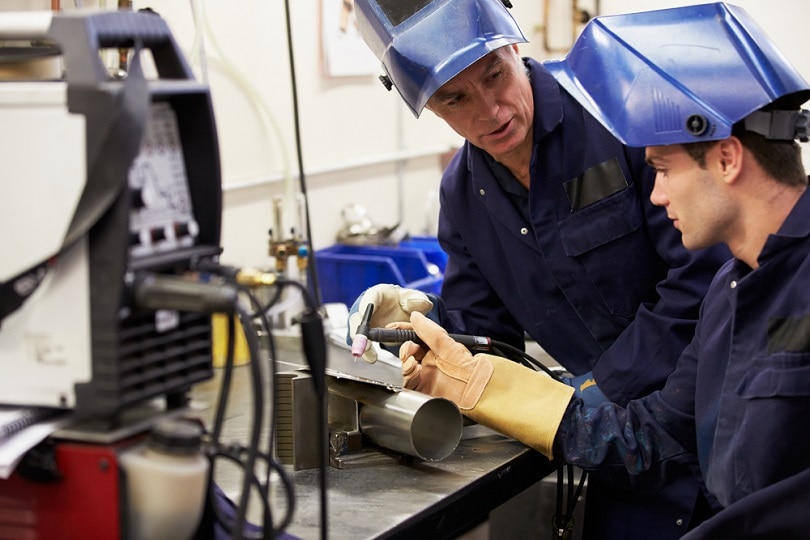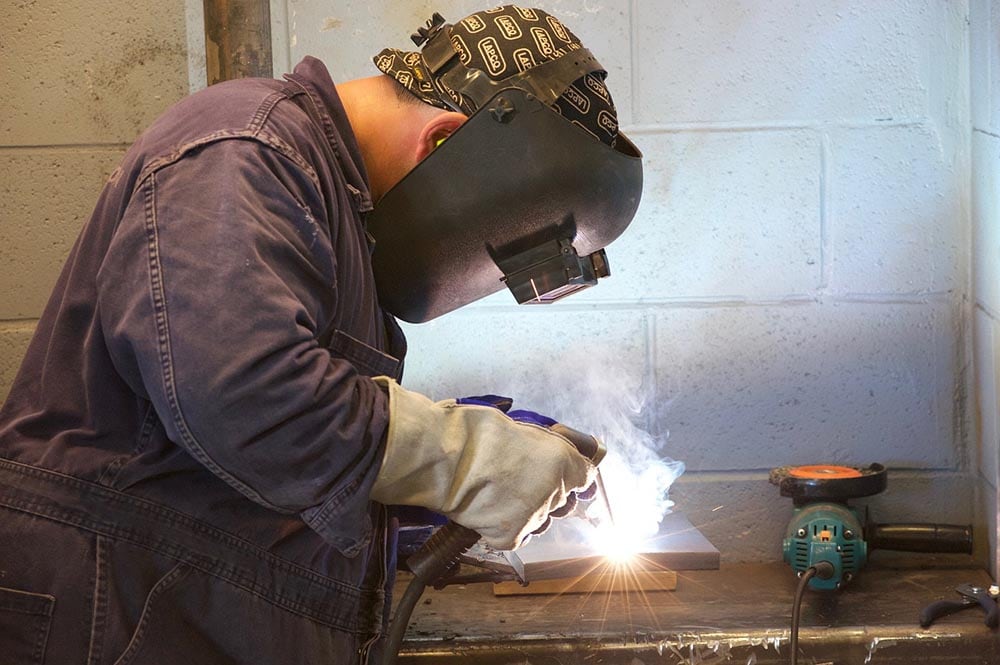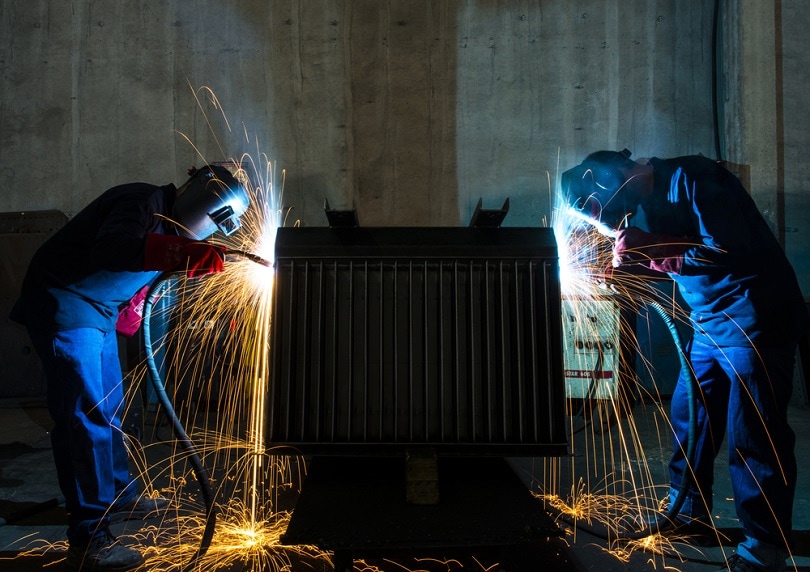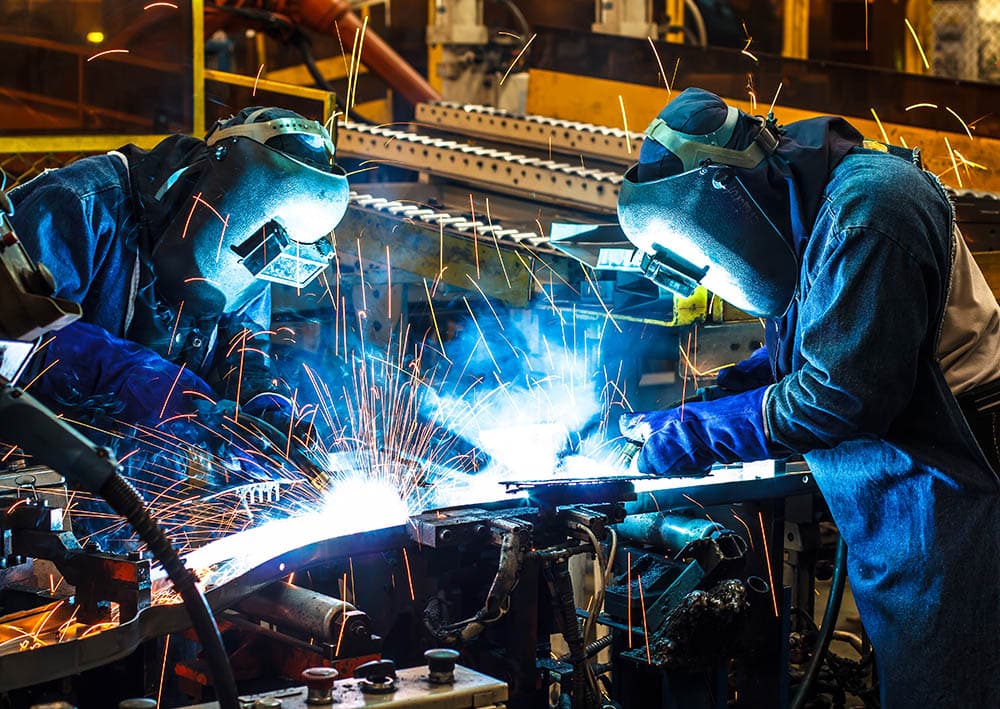How Much Do Welding Apprentices Make In 2024? (Salary Statistics)
Last Updated on

If you’re looking for a career that offers steady employment while growing in demand, welding is a good fit. Welding apprentices earn good wages even though their experience levels range widely. But, how much is this, to be precise? That’s what we’re here to discuss today.
We have put together this guide to give you an idea of the average salary you can make as a welder apprentice. Keep reading to learn more!
Who Are Welding Apprentices?
A welding apprenticeship program provides on-the-job training under the supervision of experienced welders. Apprentices must complete a minimum number of hours each week under direct supervision. They earn credit toward becoming certified welders. The best thing about welding apprentices is that they earn while learning.
At a glance, here are several duties of a welding apprentice:
- Keep welding equipment operating at peak performance. Change consumables and keep them clean.
- Read blueprints and understand technical drawings.
- Make calculations for materials needed for each project.
- Inspect for defects in workpieces and carry out welding duties to correct them.
- Get ready materials and surfaces that need welding and make sure they don’t have dust or rust on them.
- Put up scaffolding and ladders for each welding project.
- Follow directions from journeyman to fix worn-out metal parts.

Average Salary of a Welding Apprentice
Usually, a welding apprentice makes $31,204 annually. It equates to $15 per hour, depending on the job location. Welding apprenticeships take three to four years.
One of the highest-paying countries for welding apprentices worldwide is the US. We have compiled a list of the highest-paying cities in the US, as seen below:
Highest Paying Cities for Welding Apprentice Jobs in the US
| City | Salary (Per Year) | Salary (Per Hour) |
| Oakland (California) | $38,097 | $18.32 |
| Wasilla (Alaska) | $37,924 | $18.23 |
| San Jose (California) | $38,540 | $18.53 |
| Tanaina (Alaska) | $37,924 | $18.23 |
| Seattle (Washington) | $37,048 | $17.81 |
| Sunnyvale (California) | $36,744 | $17.67 |
| Seaside (California) | $35,838 | $17.23 |
| Concord (California) | $36,954 | $17.77 |
| Hayward California) | $37,299 | $17.93 |
| Santa Cruz (California) | $36,318 | $17.46 |
Besides the US, here are a few selected countries and their average salaries of welding apprentices.
| Country | Average Salary (Per Year) | Average Salary (Per Hour) |
| United Kingdom | 28,931 Sterling Pounds ($35,688.27) | 5.27 Sterling Pounds ($6.50) |
| Canada | 42,900 Canadian Dollars ($32,997.82) | 22 Canadian Dollars ($16.92) |
| Australia | 55,000 Australian Dollars ($38,210.98) | 28.21 Australian Dollars ($19.60) |
| Germany | 38,073 Euros ($40,207) | 18 Euro ($19.01) |
| France | 20,840 Euros ($22,011.90) | 10.84 Euros ($11.45) |
Now you know the average welder apprentices’ salaries in several countries. So, let’s look at several factors determining a welding apprentice’s salary.

Factors Affecting the Salary of a Welding Apprentice
The income of a welding apprentice depends on several factors, including the level of education, experience, and the type of welding work a welding apprentice will be handling.
Let’s understand these factors better.
Experience
The more experienced you are with welding and related skills, the more money you can expect to make as an apprentice. As your experience grows, so does your potential for earning more money.
Education Level
Your level of education also affects how much you’ll receive as a welding apprentice. If you have completed only high school, you may receive less pay. You’ll get a higher pay if you have completed college or technical school courses in welding.
Type of Work
The type of work you do as a welding apprentice impacts how much you’ll earn and your potential future earnings.
For example, you may start working as a welding apprentice in construction. You may earn less than someone who starts working in the manufacturing or transportation industries. It’s because construction jobs are temporary and do not need extensive training.
Do Welding Apprentices Receive Benefits and Bonuses?
Yes, they do. But the amount will depend on the company worked for and their policies. Some of the benefits include:
Medical Allowance
Most companies offer this as part of their benefits package. It may include dental and vision insurance as well.
Paid Vacation
Welding apprentices may also be eligible for paid vacation time depending. It can be anywhere from five to ten days per year or more.
Bonuses
As a welding apprentice, you may be eligible for bonuses at the end of each quarter or semester if you meet goals set by your supervisor and how well you perform when training and working.

How to Become a Welding Apprentice
Below is a simplified procedure for becoming a welding apprentice.
1. Take Welding Classes
It’s crucial to attend welding classes and learn about this career field before committing to finding an apprenticeship. Get a high school diploma or GED. You can take advantage of community resources. If there aren’t any welding schools nearby, check out community colleges and technical schools or vocational training centers in your area. You can even take an online class to learn more about welding.
Choose an institution that offers an accredited program. Most welding schools will need you to take classes in English, math, and science. Then, you can enroll for any welding classes. Many programs are offered at the high school level.
Many community colleges also offer associate’s degree programs in welding technology. It will prepare you for entry-level positions as welders or apprenticeships.
2. Select the Welding Type You Want to Pursue
There are different types of welding you can learn. Each type needs specific skills and equipment. You will need to narrow down and specialize in one.
Some common types of welding you can learn:
- Gas Metal Arc Welding (GMAW): It’s the most common form of welding. It uses an electric arc to melt the metal. You can use it for both ferrous and non-ferrous metals.
- Flux-Cored Arc Welding (FCAW): This welding type uses a wire electrode with flux powder inside. The flux powder protects against oxidation during the welding process. It’s often used with stainless steel and aluminum because it doesn’t need a shielding gas.
- Shielded Metal Arc Welding (SMAW): This welding type uses a shielding gas supplied externally. It protects against contamination during the welding process. Also, it creates a protective arc between the electrode and workpiece while molten metal flows through the gap between them.
3. Get Certification
Many different types of welding certification are available. There are basic safety courses and more advanced certifications that teach you how to weld different metals together.
The most common type of certification is an AWS (American Welding Society) Certification. It is proof that you know what you’re doing when you apply for a job as an apprentice welder. The AWS offers several different types of certification.
4. Find an Apprenticeship
Find an apprenticeship program that matches your interests. There are many resources available to help you do this. Some welding schools also offer apprenticeships. Others may offer assistance with finding one.
The American Welding Society (AWS) offers a directory of registered welding program sponsors. They can provide information about their programs and how they can help you get started on your career path.

Is Welding Apprenticeship Dangerous?
As you consider the salary you will be earning as a welding apprentice, it is also important to know the risks you may face while in the line of duty.
Welding comes with many challenges. If you make a mistake, it can cost lives or ruin machinery or equipment. That could mean hundreds or even thousands of dollars wasted on repairs.
Also, you must deal with heat from the welding machine. A simple mistake made by a welding apprentice can result in severe burns on the hands, arms, or face.
Falling objects is another common cause of injury among welding apprentices. You could also fall when climbing ladders or scaffolds. To prevent falling debris accidents, always use proper safety equipment when climbing high surfaces.
All in all, welding apprentices are encouraged to be cautious always. After all, each job has its risks, but mostly, the salary and benefits cover up to some extent so that each worker is comfortable.
Final Thoughts
Welding is the ideal trade for those who want to build a solid skill set. Also, it’s perfect if you want to get excellent wages and benefits. You’ll also have room for advancement throughout your career. The best thing is to start a welding apprenticeship before becoming a certified welder.
We hope you now have valuable information about how much welding apprentices can make nowadays. This information will help you make a more informed decision if you want to become a certified welder.
